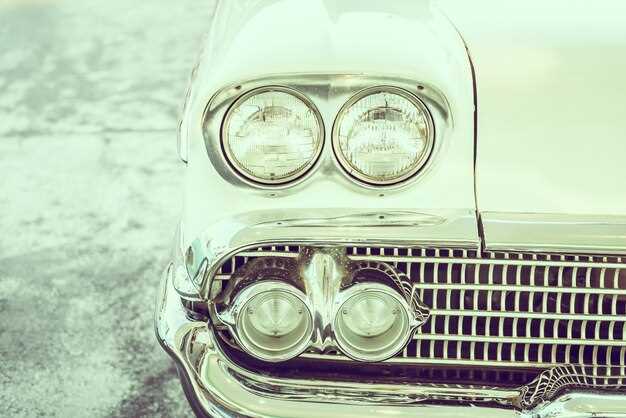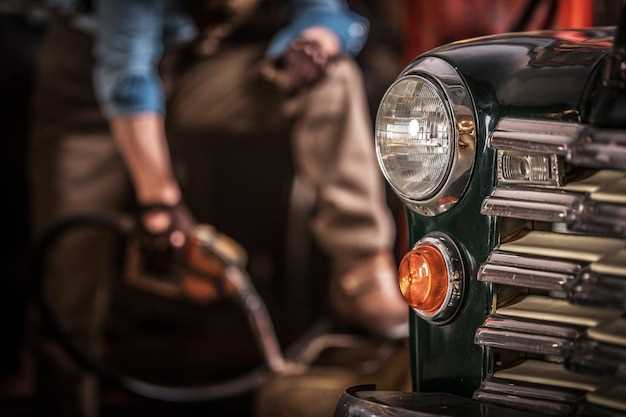

The value of antique vehicles extends far beyond their aesthetic appeal; these remarkable machines serve as vital links to our past. They embody the craftsmanship, innovation, and cultural heritage of their respective eras, making them invaluable to collectors, historians, and enthusiasts alike. Each antique vehicle carries a unique story, often reflecting the social and economic landscape of the time in which it was created.
In the realm of collecting, appraisals play an essential role in determining the market worth of these vintage automobiles. Experts evaluate various factors, including condition, rarity, and historical significance, to provide an accurate assessment that can guide buyers and sellers alike. Understanding the appraisals process is crucial for anyone looking to invest in or sell antique vehicles, as it can significantly influence their value in an ever-evolving marketplace.
Furthermore, the appreciation for antique vehicles goes hand in hand with a growing interest in preserving our history. As we explore their significance, we are reminded that these vehicles are not merely relics of the past, but rather cherished artifacts that continue to captivate current and future generations. The allure of antique vehicles lies in their ability to connect us to the journey of automotive evolution and the rich tapestry of human experience.
Understanding Antique Vehicle Appraisals

Antique vehicle appraisals are essential for determining the market value of classic cars that have historical significance, rarity, and collectability. These appraisals involve a detailed examination of the vehicle’s condition, including the bodywork, engine, and interior, as well as an assessment of any modifications or restorations that may have been completed over the years.
Appraisers rely on various resources to establish an accurate value, including auction results, industry price guides, and historical data on similar antique cars. The appraiser’s expertise plays a critical role in the process, as they must be knowledgeable about different makes and models, as well as current trends in the collector car market.
Several factors affect the value of an antique vehicle. The provenance, or history of ownership, adds to its desirability, while documentation such as original titles, service records, and photographs can enhance its appeal. Additionally, the rarity of the model, the number of units produced, and the vehicle’s overall aesthetic and mechanical condition influence appraisals significantly.
Obtaining an appraisal is crucial for various reasons, including insurance purposes, estate planning, and when considering selling or buying an antique car. An accurate appraisal ensures that both buyers and sellers have a clear understanding of the vehicle’s worth, facilitating fair transactions and protecting investments in these cherished automobiles.
Factors Influencing the Value of Antique Cars
The value of antique cars is determined by several key factors that collectors, investors, and appraisers carefully consider. One of the primary factors is the rarity of the vehicle. Limited production models or those that were only manufactured for a short period tend to have a higher value due to their scarcity.
Another significant aspect is the condition of the car. Vehicles that are well-preserved or restored to their original state often command a premium price. Appraisals generally take into account the quality of restoration work and the authenticity of the parts used. Moreover, a car with a documented history, including previous ownership and maintenance records, can significantly enhance its value.
The make and model of the antique car also play a crucial role. Renowned brands with a rich heritage or specific models that are iconic within automotive history typically see higher valuations. Factors such as performance, design, and technological innovation associated with these models further contribute to their market appeal.
Lastly, market trends and demand can influence the value of antique cars over time. Seasonal fluctuations, economic conditions, and the popularity of certain types of vehicles can impact prices. Enthusiast communities and car shows often play vital roles in shaping perceptions of value among collectors.
Best Practices for Maintaining Antique Vehicles

Keeping antique vehicles in prime condition is crucial for preserving their value and performance. Here are best practices to follow:
- Regular Inspections:
Conduct thorough inspections to identify any potential issues. Check the engine, transmission, brakes, and suspension systems regularly.
- Proper Storage:
Store antique cars in a climate-controlled environment. Avoid exposing them to harsh weather conditions, which can cause rust and deterioration.
- Use Quality Parts:
When replacing parts, choose high-quality or original equipment manufacturer (OEM) components to maintain authenticity and performance.
- Regular Maintenance:
- Change the oil and coolant regularly according to the manufacturer’s recommendations.
- Inspect and replace worn-out hoses and belts as necessary.
- Keep the fuel system clean and utilize fuel stabilizers to prevent degradation.
- Cleaning and Detailing:
Maintain the exterior and interior by gently cleaning surfaces with appropriate cleaners. Wax the paint to protect it and enhance its appearance.
- Documentation:
Keep a detailed log of maintenance and repairs. This documentation can significantly enhance the car’s value when it comes time to sell or appraise the vehicle.
By adhering to these best practices, antique vehicle owners can ensure that their prized possessions retain their value and continue to be a source of pride for years to come.






